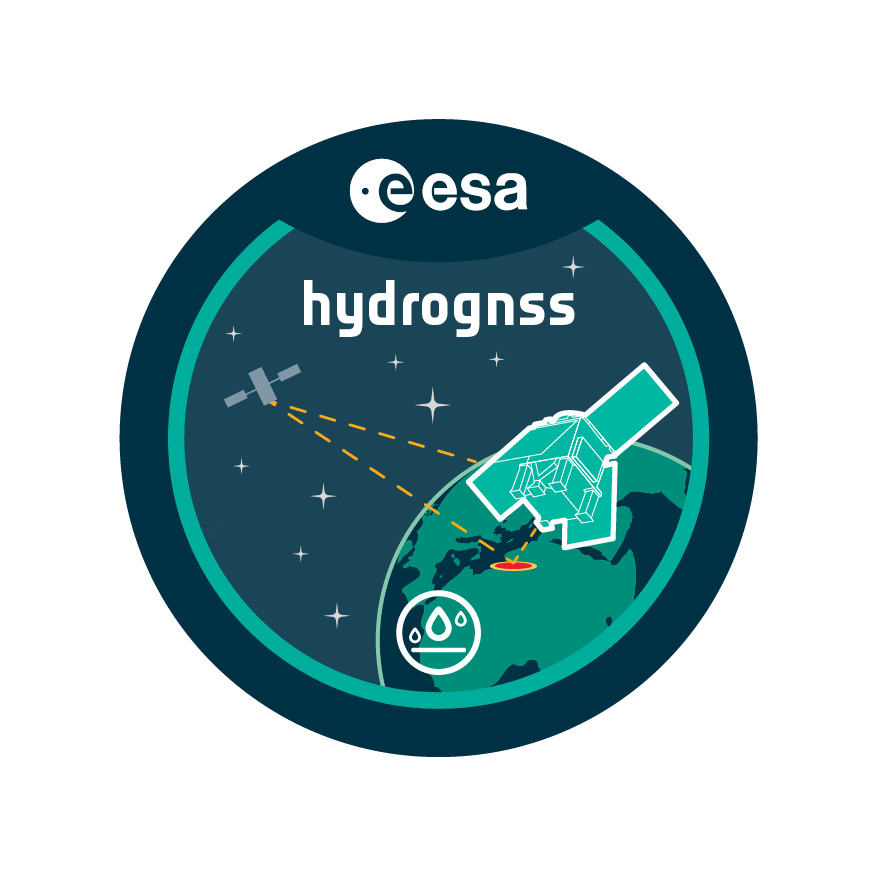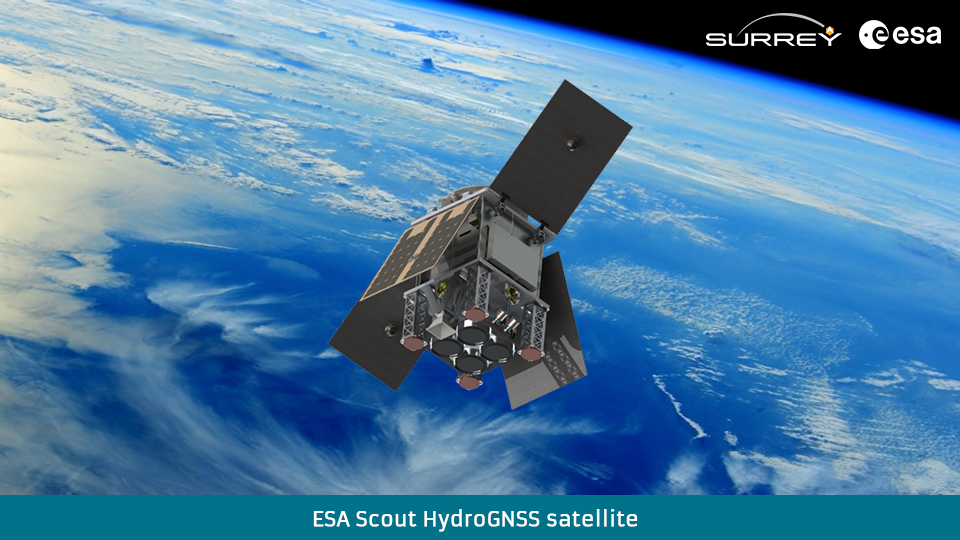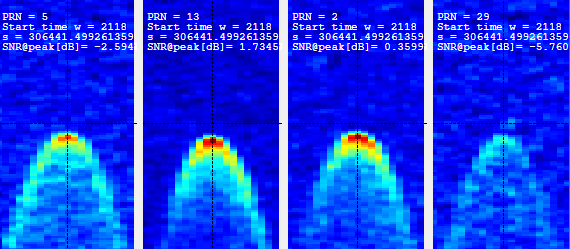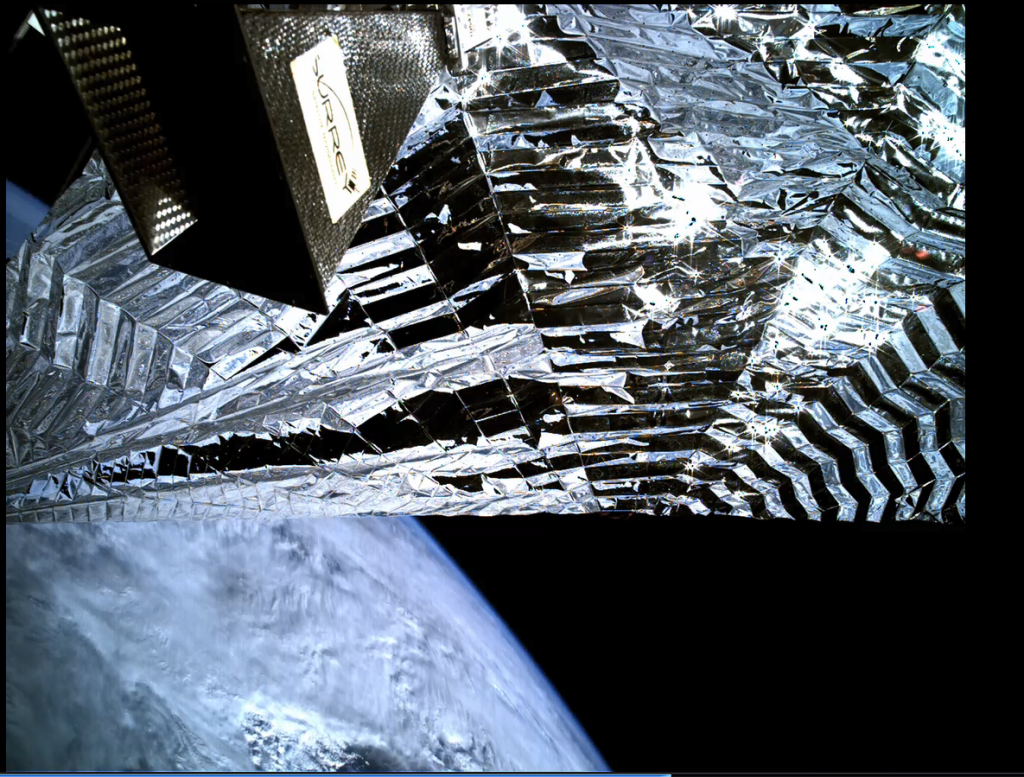ESA’s HydroGNSS mission will now comprise two identical satellites.
Read more in the press release.
https://www.sstl.co.uk/media-hub/latest-news/2022/hydrognss-mission-doubles-in-size

ESA’s HydroGNSS mission will now comprise two identical satellites.
Read more in the press release.
https://www.sstl.co.uk/media-hub/latest-news/2022/hydrognss-mission-doubles-in-size

24th 25th February 2022
An online introductory workshop about the ESA Scout HydroGNSS mission was held on Thursday 24th and Friday 25th of February 2022. Here is a web-link for the event including a link the agenda and recordings of sessions:
https://www.sstl.co.uk/media-hub/latest-news/2022/hydrognss-online-workshop

SSTL entered a contract with ESA on 11th October 2021 to provide under the new Scout small scientific satellite programme a mission called HydroGNSS to measure climate change variables using GNSS Reflectometry. SSTL is working on the project with scientific partners from Sapienza, IEEC, FMI, Tor Vergata, CNR/IFAC, NOC, Nottingham and others.

More information can be found in these links:
Youtube animation
https://www.sstl.co.uk/media-hub/latest-news/2021/sstl-hydrognss-climate-mission-given-green-light-b

Surrey Satellite Technology Ltd (SSTL) has successfully demonstrated GNSS-Reflectometry (GNSS-R) from its 18kg DoT-1 satellite. SSTL has pioneered the new field of GNSS-R with successful payloads on board TechDemoSat-1 and the CYGNSS constellation, and is continuing to develop the technology and data analysis in pursuit of this new science. The latest GNSS-R payload on-board the DoT-1 satellite is incorporated within the new small form factor Core Avionics module integral to all SSTL’s future satellite platforms. This innovation paves the way for any SSTL satellite that can accommodate a nadir pointing antenna to become part of a GNSS-R small-sat constellation.
More info in press release at:
https://www.sstl.co.uk/media-hub/latest-news/2020/sstl-demonstrates-new-gnss-r-capabilities

The deployment of the Icarus-1 drag sail, which was supplied by Cranfield University, marks the end of mission operations for SSTL’s TechDemoSat-1. This sail increases the cross-sectional area of the satellite and hence atmospheric drag to speed up reentry.
SSTL posted a press release announcing the deployment. Jonathan Amos from the BBC tweeted with a special mention of the achievements of TDS-1 in GNSS Reflectometry.
Meanwhile SSTL staff members are working on an upcoming satellite mission carrying an opportunistic GNSS reflectometry experiment. We hope to bring you news about this new project very soon.
Routine DDM collection from the SGR-ReSI on TechDemoSat-1 ceased in December 2018, and since then, operators have been making preparations for the drag-sail deployment. This has required controlled passivation of the satellite, which includes the slow expulsion of all remaining propellant from the propulsion tanks.
During gaps in this preparation period, we have been able to make a final handful of L0 raw data collections from TDS-1, to add to the collections we have gathered through its 5 year lifetime.
As well as C/A code signals from GPS, we have been targeting E1B/C reflections from the Galileo satellites, and other signals that fall within the SGR-ReSI’s frequency band. The Galileo signals are wider in bandwidth than GPS C/A code, and use BOC modulation. These new signals are somewhat more complex to process, but to a first order, we see similar behaviour in the DDMs to GPS C/A code reflections over ocean, land and ice. This is good news as it shows the practicality of using Galileo alongside GPS reflections in our upcoming GNSS-R missions.


We at SSTL, together with partners from NOC, will be presenting recent results from TDS-1 at the GNSS+R 2019 workshop 20-22nd May 2019 in Benevento, Italy. We look forward to meeting many of you there.
Documents changes from L1B V0.7 to 0.71 in AGSP calculation
Also Direct signal meta-data from v0.1 to v0.2
We are sad to announce that life extension of TechDemoSat-1 for supporting MERRByS is coming to an end. Routine GNSS-R data collection will cease this weekend (16th Dec 2018), and the GNSS reflectometry service will not resume in January. The SGR-ReSI was just one of the 8 technology experiments, and the final demonstration on TDS-1 is the de-orbit sail; this will be deployed early in 2019.
SSTL and NOC have plans for the flight of future GNSS Reflectometry instruments to continue what TDS-1 started, so watch this space!
In the meantime, we will keep maintaining the website and data repository.
Thank you for your ongoing interest in and participation with this GNSS-Reflectometry project. We continue to welcome feedback into a potential future GNSS-R service.